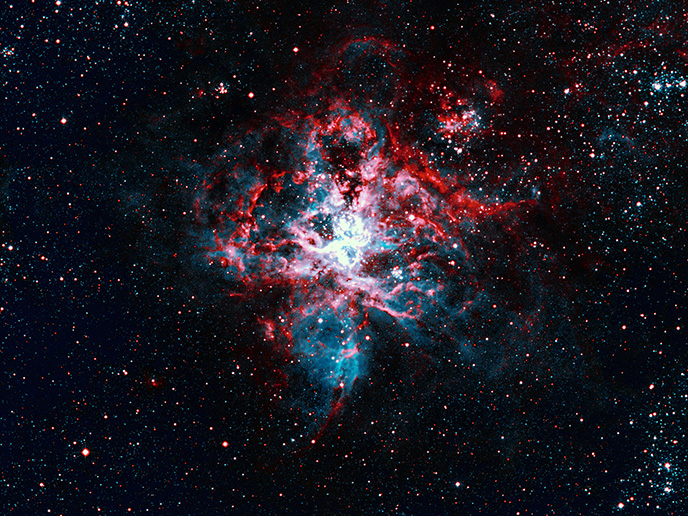Modelling and simulations shed new light on the high-density matter of neutron star cores
These states of matter have extremely strong magnetic fields, and host both superfluids and superconductors. In particular, the density in their cores is so high that exotic states of matter are likely to appear. “The possible states are still not understood theoretically, so neutron stars provide stable sources that we can observe to learn more about the physics at extreme densities,” says Yuri Cavecchi, a Marie Skłodowska-Curie fellow who led the EU-funded Burst3D project. Neutron stars in binary systems display extremely bright X-ray flashes known as type I bursts. When matter from the companion star lands on the neutron star because of the strong gravity, it is compressed to extremely high pressure and effectively explodes, emitting bright X-ray flashes. “The time evolution of the intensity of these flashes contains information about the core of the neutron star due to the effects of general relativity,” Cavecchi explains. “However, we need to be able to model the evolution of the burning and the temperature of the surface in order to fully unravel the information we seek.”
Unprecedented simulations during bursts
The researchers ran computer simulations of the type I bursts that take place on neutron stars. The most important achievement of the simulations relates to the role of instabilities at the front of the burning flame. “As the flame propagates across the surface, strong winds develop at the front where hot and cold fluids are in contact,” observes Cavecchi. “This configuration is highly unstable and breaks the front into separate, smaller vortices, similar to hurricanes of fire.” There are two net effects, according to Cavecchi: “First, these vortices move ahead of the flame front, leading to a much faster propagation that can explain the fast rise of the burst flashes. Second, these same vortices provide an emission pattern that’s asymmetric and could potentially explain features observed in the time evolution of the flash intensity that are key to understanding the nature of matter in the neutron stars’ core.” The vortices may be the direct source of those features, or may instigate waves in the burning ocean that lead to these signatures.
Reconciling theory and observations
Analyses showed how to reconcile the theory of nuclear burning with the observed frequency of ignition of the type I bursts, and how to connect observations to burning parameters. “From an observational point of view, different sources challenged our theoretical understanding of nuclear burning and ignition,” notes Cavecchi. “Counter-intuitively, while more and more matter accumulates on the surface, some of these sources display less and less frequent burst explosions.” The analytical calculations included the effects of different conditions on the star surface and the role of mixing new material with the ashes of previous bursts. “Burst3D provided answers to open questions on burst phenomenology, opening the way to the exploitation of X-ray observations in studying the behaviour of ultra-dense matter in neutron star cores,” concludes Nils Andersson, project coordinator and professor of Applied Mathematics at the University of Southampton(opens in new window).







